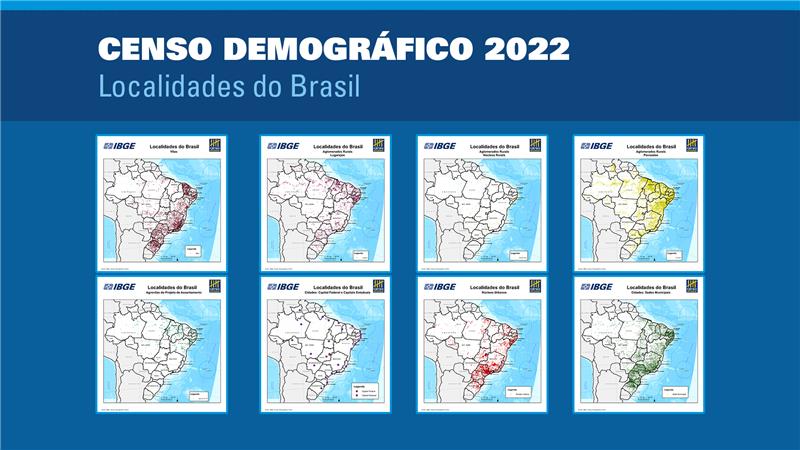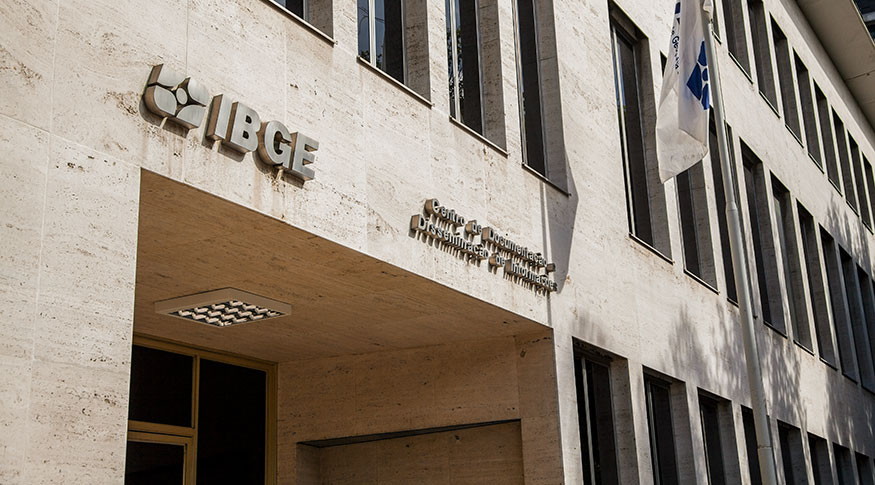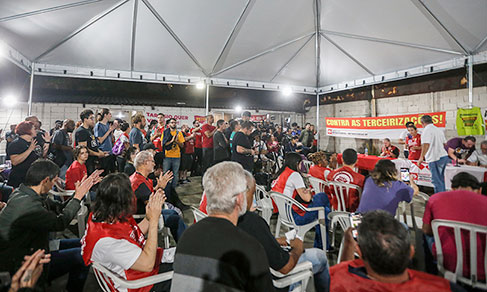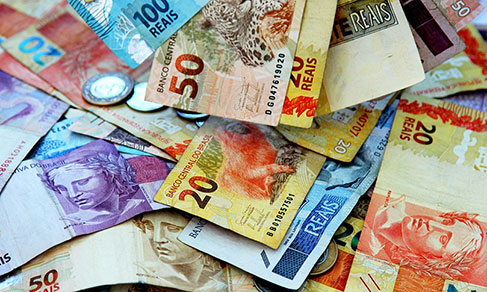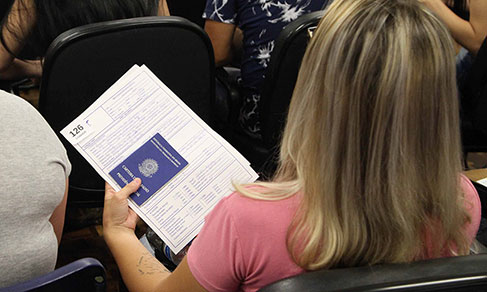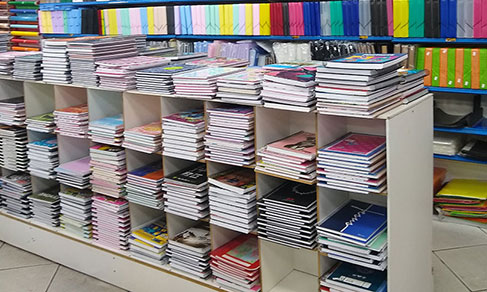Inflation preview
Inflation preview stands at 0.44% in May, influenced by gasoline increase
May 28, 2024 09h00 AM | Last Updated: May 28, 2024 03h09 PM

The inflation preview was 0.44% in May, 0.23 percentage points (pp) above the rate recorded in April (0.21%). The biggest influences came from the following groups: Health and personal care, which registered an increase of 1.07%, and Transportation, which accelerated 0.77%, largely due to the increase in gasoline (1.90%), responsible for an impact of 0.09 pp in the general index.
In the year, the Extended National Consumer Price Index 15 (IPCA-15), released today (28) by the IBGE, accumulates an increase of 2.12% and, in 12 months, of 3.70%, below the 3.77% rate observed in the previous 12 months. In May 2023, the IPCA-15 was 0.51%.
Eight of the nine groups of products and services surveyed had positive results in May. The rise in prices in Health and personal care (1.07%) was influenced by pharmaceutical products (2.06% and 0.07 pp impact), after the authorization of an increase of up to 4.50% in medicine prices, as of March 31st. Furthermore, personal hygiene increased from 0.29% in April to 0.87% in May, mainly influenced by perfumes (1.98%).
The other major contribution in May came from the Transportation group (0.77%), influenced by the increase in gasoline (1.90% and 0.09 pp) and airfare (6.04% and 0.04 pp). In relation to other fuels (2.10%), ethanol (4.70%) and diesel fuel (0.37%) increased. On the other hand, vehicle gas (-0.11%) recorded a drop in price.
Also noteworthy is the subway change (2.53%), which was influenced by the fee increase of 8.69%, as of April 12, in Rio de Janeiro (7.45%). The increase in the taxi sub-item (0.73%) is due to the average rise of 17.64%, as of April 22, in Recife (14.12%).
High in onion prices leverages food and beverage results
In the Food and beverages group (0.26%), food at home increased 0.22% in May. The main positive contributions were the increases in onions (16.05%), ground coffee (2.78%) and long-life milk (1.94%). Among the declines, the highlights were carioca beans (-5.36%), fruits (-1.89%), rice (-1.25%) and meat (-0.72%).
Eating away from home (0.37%) accelerated in relation to April (0.25%), due to the more intense increase in meals (0.07% in April to 0.34% in May). Snacks (0.47%) had a change equal to that recorded in the previous month.
High in water and sewage rates, with rises in São Paulo and Goiânia, influenced Housing results
In the Housing group (0.25%), the increase in water and sewage rates (0.51%) was influenced by rises of 6.94% in São Paulo (1.39%), as of May 10, and 1.95% in Goiânia (1.01%), as of April 1st. In residential electricity (0.17%), tariff increases were applied in the following areas: Salvador (3.26%), with an increase of 1.63%, as of April 22; Recife (-1.08%), with a rise of -2.64% from April 29th; and Fortaleza (-3.69%), with a rise of -2.92% as of April 22nd.
The other positive results in May came from Wearing apparel (0.66%), Personal expenses (0.18%), Communication (0.18%) and Education (0.11%), while Household articles (-0.44 %) recorded the only decrease in the month.
Salvador has the highest change and Rio de Janeiro, the lowest
As for regional indices, the eleven areas saw increases in May. The biggest change was recorded in Salvador (0.87%), due to increases in gasoline (6.89%) and residential electricity (3.26%). The lowest result occurred in Rio de Janeiro (0.15%), which saw a drop in the prices of black beans (-10.38%) and meat (-1.56%).
IPCA-15 collection in Rio Grande do Sul
Due to the public calamity situation in the Metropolitan Area of Porto Alegre, which is covered by the survey, remote price collection was intensified, with in-person collection applied when possible.
To calculate the IPCA-15, prices were collected from April 16 to May 15, 2024 (reference period) and compared with those in force from March 15 to April 15, 2024 (base). The appropriate information in May's IPCA-15 was validated based on the methodologies for calculating, editing and imputing the prices in force in the National System of Consumer Price Indexes (SNIPC).
In May, nearly 30% of the collection was carried out during the emergency situation remotely, by telephone or Internet, instead of in-person. It is worth noting that the collection calendar for the month of May started on April 16 and ended on May 15, and remote price collection was intensified from May 06 on, when approximately 70% of prices had already been collected. Even so, not all sub-items could be collected by telephone or over the Internet, as for instance some sub-items of the vegetable group. In cases of absence of prices, data was imputed, a procedure provided for and described in the publication “National System of Consumer Price Indexes: Calculation Methods - 8th edition, available at liv101767.pdf” (in Portuguese: “Sistema nacional de índices de preços ao consumidor: Métodos de cálculo - 8ª edição, disponível em liv101767.pdf").
The Revision Policy of Disclosed Data from the IBGE Statistical Operations establishes that the price indices used as inflation indexers in the monetary correction of public and private contracts be not revised, to guarantee the legal security of the contracts. In this context, data from the National Consumer Price Index - INPC, the Exended National Consumer Price Index - IPCA, the Extended National Consumer Price Index-15 - IPCA-15 and the Special Extended National Consumer Price Index are included - IPCA-E. You can have access to the document "Review Policy for Disclosed Data from IBGE Statistical Operations (Política de Revisão de Dados Divulgados das Operações Estatísticas do IBGE)" in Portuguese, here.
More about the survey
To calculate the IPCA-15, the methodology used is the same as that of the IPCA, the difference is in the price collection period and geographic coverage. Prices were collected from April 16 to May 15, 2024 (reference) and compared with those in force from March 15 to April 15, 2024 (base).
The indicator refers to families with an income of 1 to 40 minimum wages and covers the Metropolitan Areas of Rio de Janeiro, Porto Alegre, Belo Horizonte, Recife, São Paulo, Belém, Fortaleza, Salvador and Curitiba, in addition to Brasília and the municipality of Goiânia. Results are available on the Sidra database. The next release of the IPCA-15, for June, and the IPCA-E, for the quarter between April and June, will be on June 26th.






